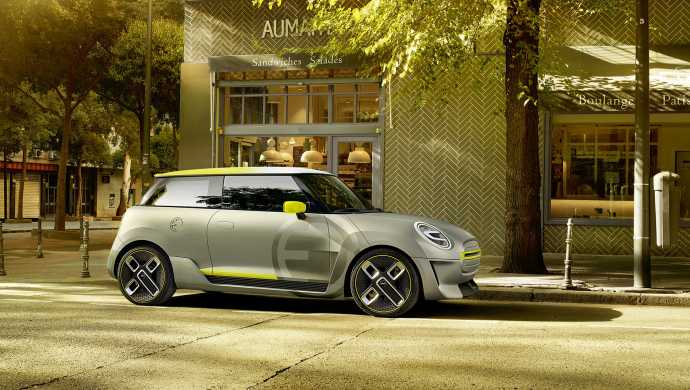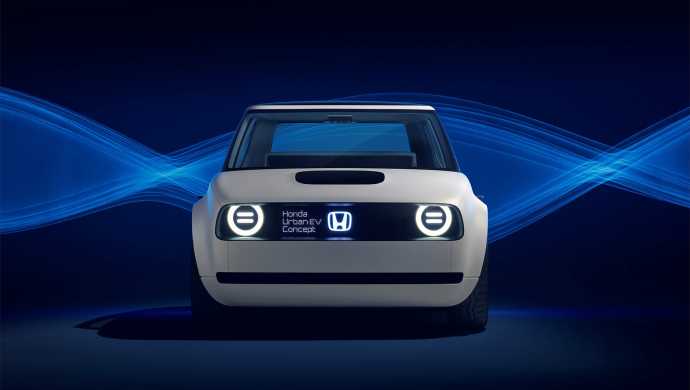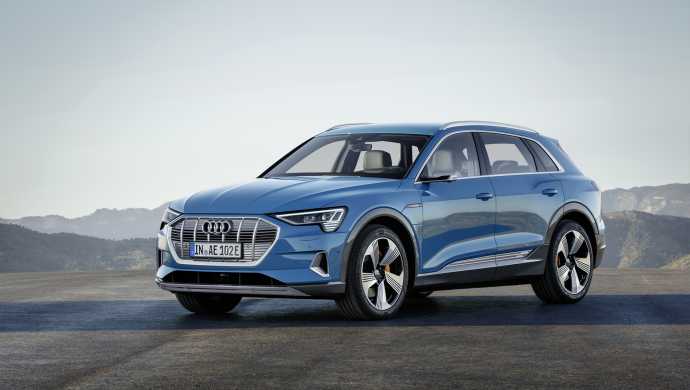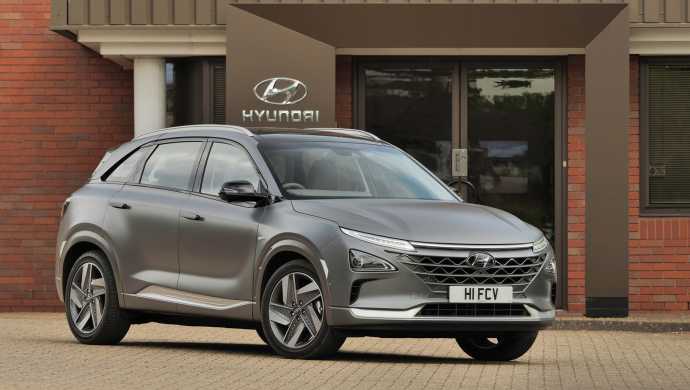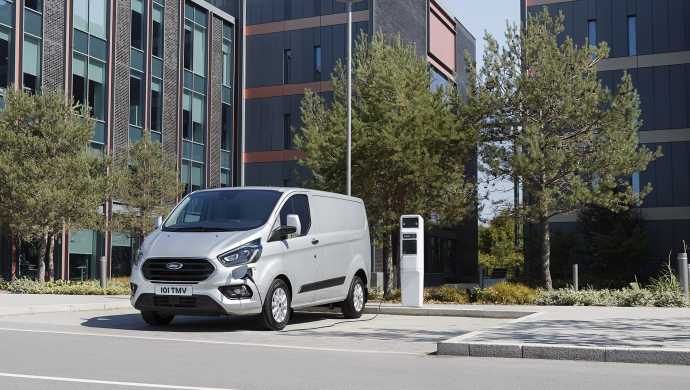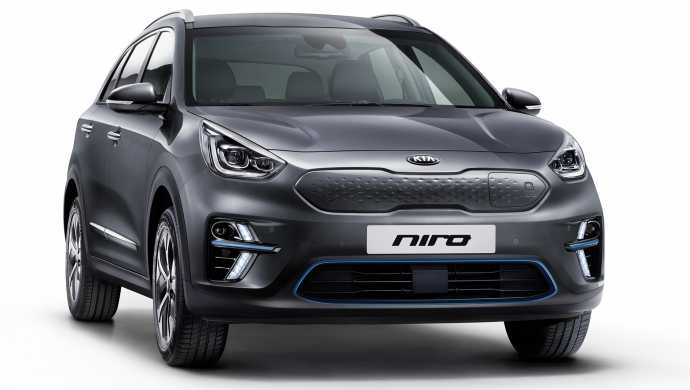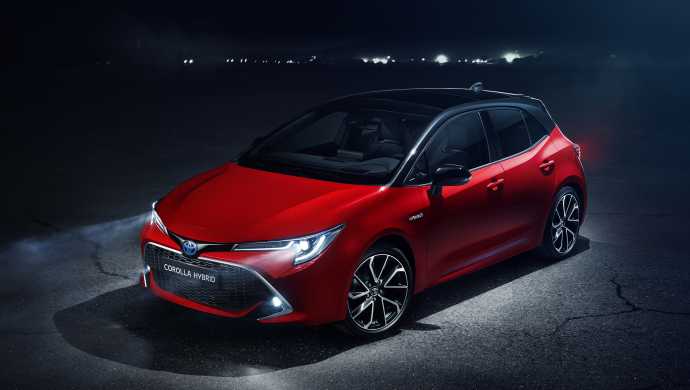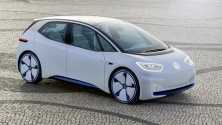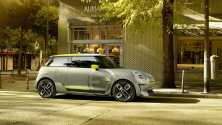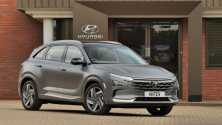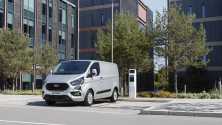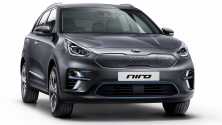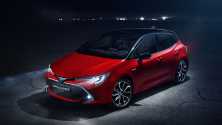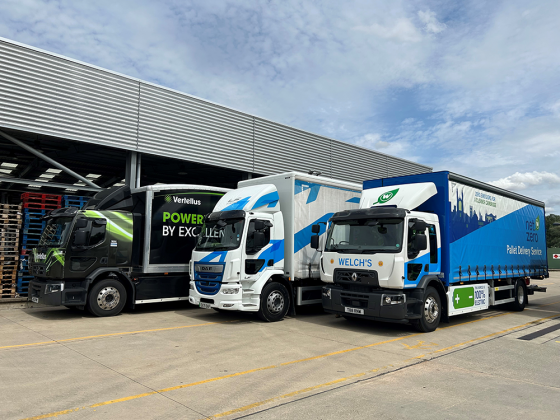Top ten green vehicles to watch out for in 2019
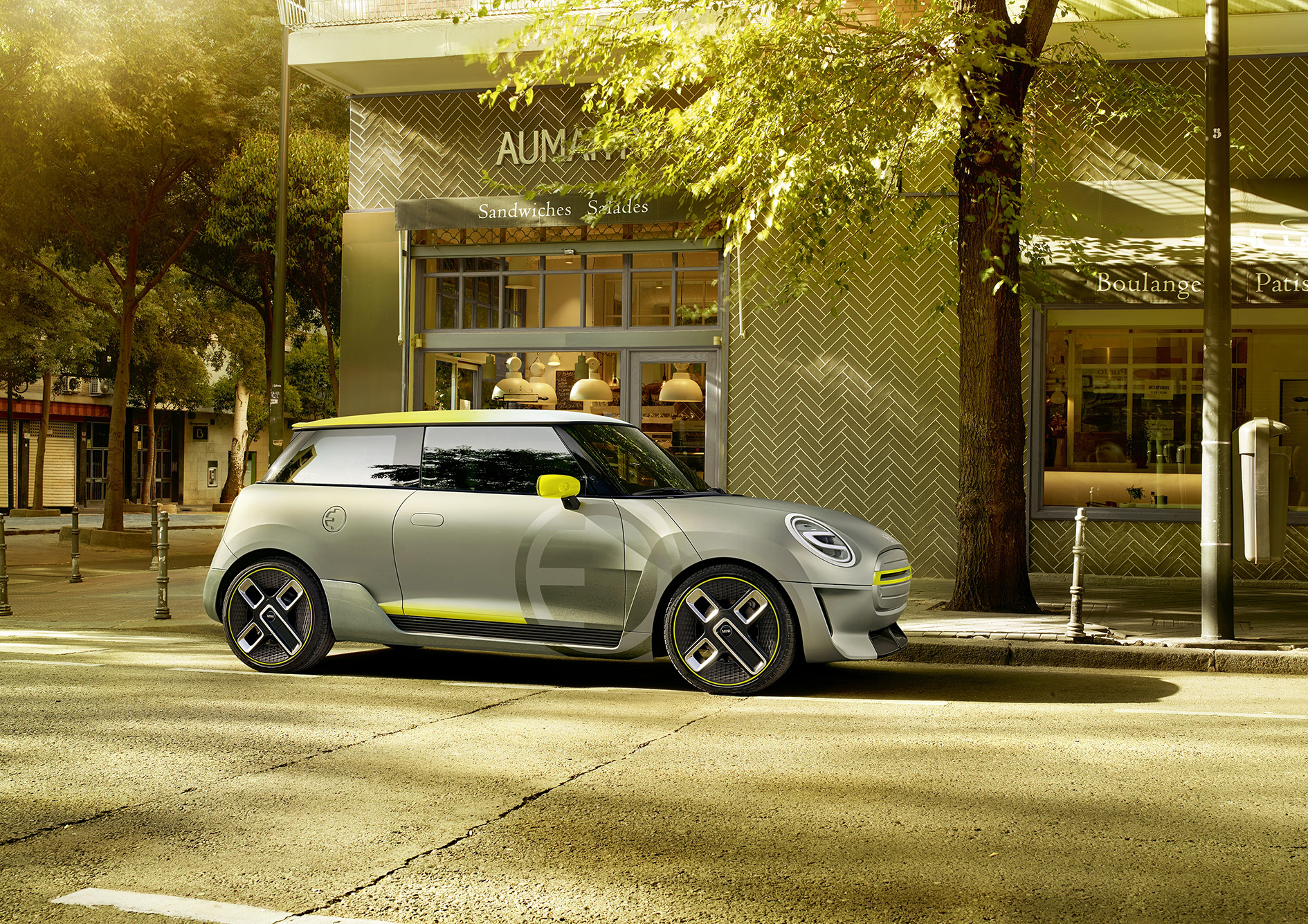
What will 2019 bring the fleet car buyer? Richard Gooding filters out the top ten low and zero-emission offerings which should be appearing at a showroom near you in the next 365 days
See below for image gallery.
Audi e-tron – Electric – CO2: 0g/km
Alongside BMW’s iX3 and Mercedes-Benz’s upcoming EQC, Audi’s e-tron will take the all-electric SUV fight to the Jaguar I-Pace in 2019. Audi’s first all-electric car, the e-tron SUV will arrive in March and sits above the Q5 but below the Q7. Like its German rivals, it has an official range of 249 miles from its 95kWh battery, and its twin motor, all-wheel drive quattro powertrain which develops up to 300kW. High tech features include optional virtual exterior mirrors fitted with cameras which feed back images onto screens in the cabin. There’s also 150kW DC fast-charging capability which can refill the battery in around 30 minutes, and while 22kW charging is an option, an 11kW provision is standard. A proprietary Audi charging service will allow e-tron drivers to access 80 per cent of the public charging stations in Europe, while a ‘Plug & Charge’ function will permit the car to self-authorise at charging stations and start the ‘refuelling’ process. With prices expected to begin above £70,000, the e-tron will be more expensive than its key competition.
Honda Urban EV – Electric – CO2: 0g/km
Hailed as its ‘Zero Hero’, the Urban EV first introduced the idea of an all-electric Honda at the 2017 Frankfurt motor show. With retro styling cues wrapped up in a futuristic package, the Urban EV will provide small car competition to the long-established Renault Zoe. Don’t let the cute looks fool you, though, as door mirrors are expected to be replaced by cameras, and while the concept’s three door layout helped it look cute, the production car will gain a pair of rear doors for added practicality. When it arrives in December, the Urban EV will be Honda’s first mass-produced battery electric vehicle sold in Europe, and with prices expected to start at £28,000, it will be more premiumly priced for a car of its size. A range of around 150 miles is expected from a single charge, and while the full-width interior colour touchscreen and display will be downsized for production, the cabin will feature lots of technology and a futuristic feel. Order books will open in early 2019.
Hyundai Nexo – Hydrogen Fuel Cell – CO2: 0g/km
Following the niche success of its ix35 FCEV (Fuel Cell Electric Vehicle, GreenFleet issue 93), Hyundai’s new fuel cell challenger will arrive in March. Called the Nexo, and with a much more modern and futuristic appearance than its predecessor, the hydrogen-powered SUV features a 40kW battery, 120kW electric motor, and a 95kW fuel cell stack. Eco-driving technologies help the Nexo to an officially-claimed 369-mile driving range on a single tank of hydrogen, and a suite of high-tech driving assistance systems even offer autonomously parking options. Aerodynamic features such as air curtains, and flush-surface wheels and door handles help achieve a low Cd figure of 0.329. The Nexo spearheads Hyundai’s plans to accelerate the development of low emission vehicles and the South Korean company will launch 18 eco-friendly models by 2025.
Kia e-Niro – Electric – CO2: 0g/km
After launching hybrid and plug-in versions of its small crossover, Kia has fitted an all-electric powertrain to the Niro to create the e-Niro. On sale from 1 April, the e-Niro shares its 64kWh lithium-ion battery and 150kW motor with the most powerful Hyundai Kona Electric (see page XX). At 282 miles, the e-Niro’s official range is three miles more than that of its South Korean relative. The e-Niro can be recharged from flat to 80 per cent in as little as 54 minutes, and a range of regenerative braking technologies allow maximum range optimisation. An eco driving assistant system provides intelligent guidance on how to drive more efficiently, and incorporates coasting guide and predictive energy control systems which suggest appropriate times to brake or coast. A range of exclusive styling features also mark out Kia’s EV newcomer, which is priced from £32,995 after the deduction of the UK government’s Plug-in Car Grant (PiCG).
Kia Soul EV – Electric – CO2: 0g/km
The original version of Kia’s electric crossover was launched in 2014 (GreenFleet issue 86), and delivered up to 132 miles of range from its 81.4kW electric motor and 27kWh lithium-ion battery. Its exaggerated, almost cartoon-like looks may put some off, but it has found a merry band of followers who enjoy the upmarket cabin and upright styling. Kia pulled the wraps off the new version at the 2018 Los Angeles motor show, and while the looks remain broadly similar, there are big changes underneath the gently-evolved appearance. Borrowing the powertrain from the new Kia e-Niro, the second-generation Soul EV packs a liquid-cooled, 64kWh battery punch. That should be good enough to match the e-Niro’s official 282 miles of range, especially with adjustable regenerative braking levels. Combined Charging System (CCS) DC fast-charge capability will come as standard for rapid battery charging. Expected to arrive in Europe during the first half of 2019 with UK availability to follow, the new Kia Soul EV will provide an affordable, long-range and differently-styled EV alternative.
Mini Electric – Electric – CO2: 0g/km
The Countryman Plug-in Hybrid got us used to the idea of an electrified Mini, but 2019 will see the unveiling of an all-electric version of the smaller Mini hatchback. Expected to arrive in the autumn, it’s taken almost 10 years to get a purely electric Mini EV into production. The Mini E of 2009 previewed the idea of an electric version of BMW’s reinvented icon, and was powered by a 150kW motor allied to a 35kWh lithium-ion battery. The 2019 production car is expected to employ a similar set-up to the BMW i3 which has an official range of 160 miles from its 125kW motor and 120Ah battery. The 2017 Mini Electric concept previewed the 2019 car, although styling details will be toned down for the production model. While only around 600 examples of the 2009 Mini E were built for field trials, the new Mini EV will be a genuinely mainstream car, with prices starting around £26,000.
Tesla Model 3 – Electric – CO2: 0g/km
As far as long-awaited electric cars go, Tesla’s Model 3 takes the crown. Revealed as long ago as March 2016, the Model 3 promises Tesla’s long-range EV formula and signature digital dashboard in a more affordable package. While its grilleless front and Model S looks may have caused consternation when it was first unveiled, the sheer range and projected price – US prices start at $35,000, around £28,000 at current exchange rates – have kept buyers waiting. Range of between 220 and 310 miles is expected to be offered from a choice of still-to-be-confirmed 60kWh and 75kWh batteries allied to both single motor / rear-wheel drive and dual motor / all-wheel drive layouts. European-specification Model 3s will be available from February, with UK cars expected later. In addition to Tesla’s Supercharger charging network, European cars will be equipped with CCS charging ports, which will allow them to use other public fast-charging networks.
Toyota Corolla Hybrid – Hybrid – CO2: TBA
The twelfth-generation of Toyota’s Corolla will arrive in February 2019 and brings the name back to the UK market after an absence of seven years. And, like the Auris before it, the latest Corolla will feature self-charging hybrid technology. But unlike its predecessor, the Corolla will be the first Toyota in Europe of offer a choice of two hybrid powertrains. A revised 1.8-litre system will sit alongside a new 178bhp 2.0-litre version, which is expected to offer a more dynamic drive. As with previous Toyota self-charging hybrids, fuel efficiency and low emissions will tempt fleet drivers, and a CVT automatic transmission will be the only gearbox offered. Based on the new Toyota New Global Architecture (TNGA) GA-C platform, four trim grades will be available, with the top-rung ‘Excel’ models exclusively hybrid. Prices for the entry-level Icon 1.8-litre hybrid start at £23,750. As well the hatch, Touring Sports estate and saloon models will follow. Toyota will have a busy 2019, with a new RAV4 Hybrid also set for launch, as well as an all-wheel drive version of the legendary Prius.
Volkswagen I.D – Electric – CO2: 0g/km
The big one, at least for Volkswagen and in terms of proposed volume. The car that’s set to begin a new electrified era for the German carmaker, the I.D was previewed as long ago as 2016. VW has called 2019 the year of ‘New Volkswagen’ and the I.D will kick-start a torrent of Volkswagen Group EVs. Touted as a new VW icon in the mould of the Beetle and Golf before it, the I.D sits on a new specially-developed ‘MEB’ electric car platform with a range of battery options. The I.D will reportedly sell for as little as a diesel Golf, and Volkswagen states that range could be up to as much as 372 miles on a single charge. Just like Tesla’s Model 3 EV, single and dual motor options are expected. The first pre-production prototypes are out testing now ready for the car’s unveiling later this year, and if it’s as affordable, usable and popular as Volkswagen claim it will be when it arrives in the autumn, it will shake up the EV market like little before it.
Ford Transit Custom PHEV – PHEV Van – CO2: TBA
Ideally-timed for the introduction of numerous city-led Ultra Low Emission Zones, the Ford Transit Custom plug-in hybrid (PHEV) will go on sale in the autumn, and will be the first van in its segment to use series-hybrid technology. Currently on test with Transport in London in the UK as well as in Valencia, Spain, the plug-in hybrid Transit delivers 30 miles of zero-emission range. This increases to 300 miles when paired with its 1.0-litre, three-cylinder EcoBoost petrol engine, which acts as a range extender. Production starts in the second half of 2019, with the 14kWh liquid-cooled lithium-ion battery pack located under the load floor, so the cargo volume and 1,000kg payload is unchanged from the Transit PHEV’s diesel-powered siblings. Three driving modes will be available, with the option to save or use the battery charge. A domestic-rated 240V/10A power socket will charge the plug-in van in five hours, while a 32A supply will cut that time by two hours.


